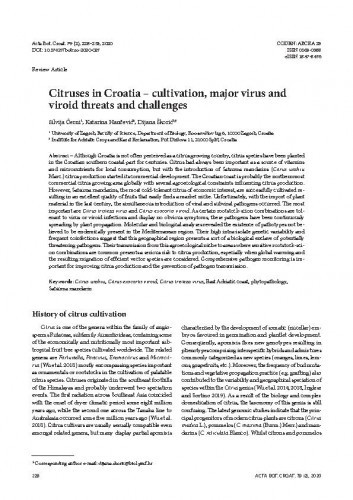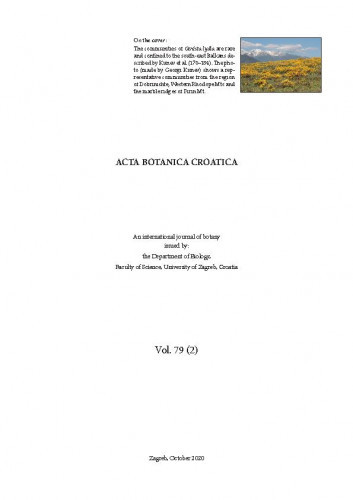Although Croatia is not often perceived as a citrus growing country, citrus species have been planted in the Croatian southern coastal part for centuries. Citrus had always been important as a source of vitamins and micronutrients for local consumption, but with the introduction of Satsuma mandarins (Citrus unshiu Marc.) citrus production started its commercial development. The Croatian coast is probably the northernmost commercial citrus growing area globally with several agroecological constraints influencing citrus production. However, Satsuma mandarins, the most cold-tolerant citrus of economic interest, are successfully cultivated resulting in an excellent quality of fruits that easily finds a market niche. Unfortunately, with the import of plant material in the last century, the simultaneous introduction of viral and subviral pathogens occurred. The most important are Citrus tristeza virus and Citrus exocortis viroid. As certain rootstock-scion combinations are tolerant to virus or viroid infections and display no obvious symptoms, these pathogens have been continuously spreading by plant propagation. Molecular and biological analyses revealed the existence of pathotypes not believed to be endemically present in the Mediterranean region. Their high intra-isolate genetic variability and frequent coinfections suggest that this geographical region presents a sort of a biological enclave of potentially threatening pathogens. Their transmission from this agroecological niche to areas where sensitive rootstock-scion combinations are common presents a serious risk to citrus production, especially when global warming and the resulting migration of efficient vector species are considered. Comprehensive pathogen monitoring is important for improving citrus production and the prevention of pathogen transmission.
Sažetak

 Acta botanica Croatica : 79,2(2020) / editor-in-chief Nenad Jasprica.
Acta botanica Croatica : 79,2(2020) / editor-in-chief Nenad Jasprica.